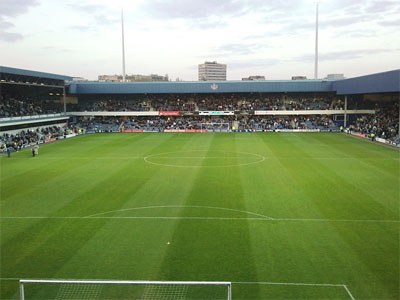Queens Park Rangers FC

|
| Queens Park Rangers' home ground in 2014. |
Queens Park Rangers FC — History, Achievements & Evolution
Early Beginnings (1882)
Queens Park Rangers was established in 1882 after the merger of two local amateur clubs: Christ Church Rangers and St. Jude’s Institute. The name “Queens Park” was chosen as many of the original players lived near Queen’s Park in Northwest London. In its earliest years, QPR built a reputation for spirited football and strong community representation.
Constant Wanderers — Many Home Grounds
Unlike most clubs, QPR spent decades moving from stadium to stadium. Between 1886 and 1917, they used almost 20 different grounds, making them one of the most nomadic teams in English football history. This wandering era ended when the club finally settled at Loftus Road, their permanent home and one of the most atmospheric venues in London.
Establishing Loftus Road — A True Home
Loftus Road became QPR’s permanent ground in 1917 and has remained the club’s heart ever since. Its tight stands and intense atmosphere make it a unique Premier League and Championship venue. For generations of QPR supporters, Loftus Road symbolizes loyalty, identity, and West London pride.
Pre-War and Early Football League Years
In the early 20th century, QPR competed in the Southern League and won the title in 1907–08. They later joined the Football League and began steadily growing as a competitive club, supported by a passionate local following and a tradition of producing talented footballers.
The 1960s Breakthrough — League Cup Triumph (1967)
QPR’s first major moment came in 1967, when they became the first Third Division team to win the League Cup. Under manager Alec Stock, QPR defeated West Bromwich Albion in one of the greatest cup upsets ever. This victory remains one of the proudest achievements in the club’s history.
The Magical 1975–76 Season — Almost Champions
QPR’s finest league season came in 1975–76 under Dave Sexton. The team, featuring stars such as Gerry Francis, Stan Bowles, and Dave Thomas, played some of the most stylish football in England and finished as runners-up — narrowly missing the league title to Liverpool. Many still regard that QPR squad as one of the greatest English teams never to win the league.
Reaching Europe
QPR qualified for European competition for the first time in the 1970s. Their 1976–77 UEFA Cup campaign saw them reach the quarter-finals, playing memorable matches against European giants and proving that Loftus Road could host continental nights full of drama and electricity.
Premier League Era — Highs, Lows & Big Moments
As founding members of the Premier League in 1992, QPR initially enjoyed success, finishing fifth in the first PL season. Stars like Les Ferdinand, Trevor Sinclair, and Ray Wilkins helped the club shine on the biggest stage. However, inconsistency and financial issues led to relegations and periods of uncertainty.
Modern Era — Rebuilds, Drama & Premier League Returns
The 2000s and 2010s brought intense drama, new ownership, and Premier League promotions. Players like Adel Taarabt delivered unforgettable performances, while the club experienced thrilling survival battles and moments of heartbreak. QPR remains committed to rebuilding sustainably and strengthening its academy and identity.
A Club of Culture, Loyalty & Community
More than trophies, QPR’s legacy lies in its culture — the blue-and-white hoops, Loftus Road, family generations of supporters, and a deep community connection that defines West London football. QPR continues to embody passion, resilience, and the spirit of the local people.
QPR’s elegant crest features intertwined initials “QPR” with a royal feel, representing the club’s West London heritage and proud identity. The shields, flourishes, and crown-like curves symbolize tradition and ambition.
